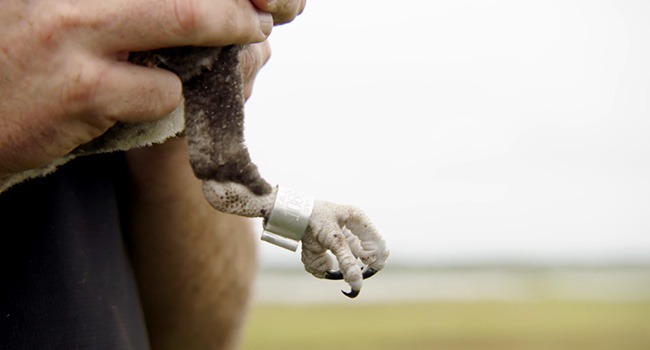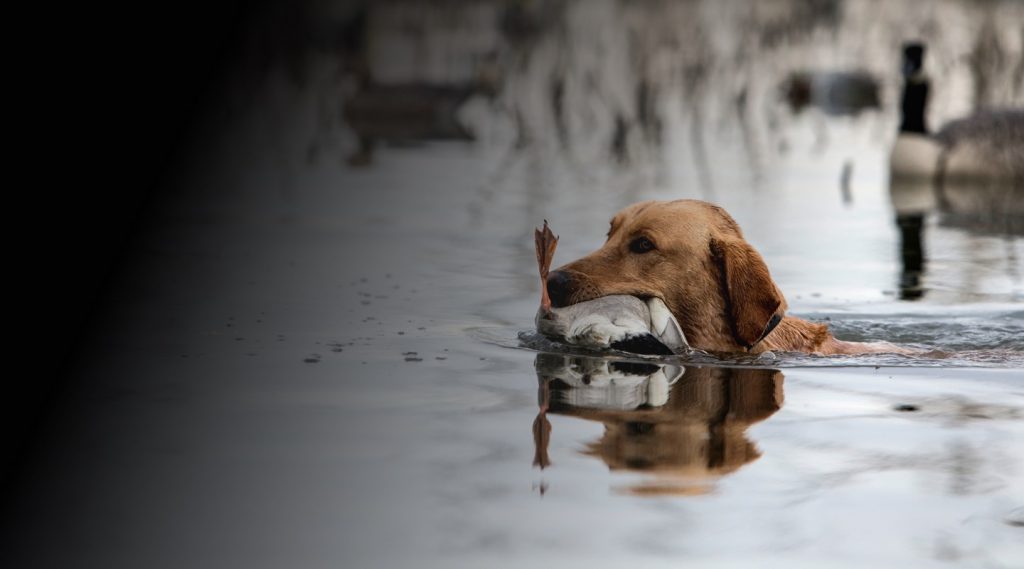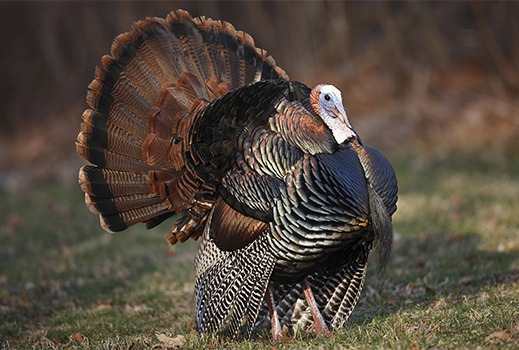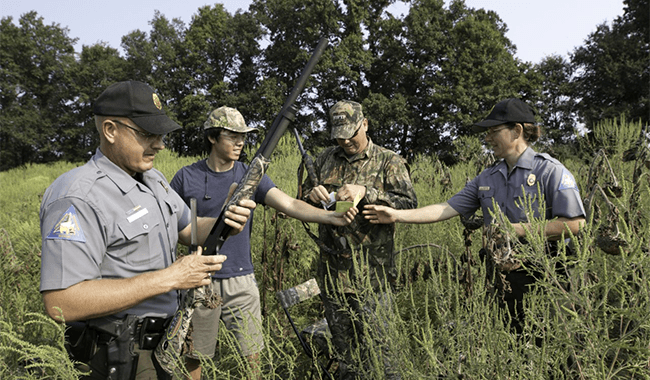Preserving Wildlife Through Partnership: Osprey Restoration Supported by Firearm and Ammunition Excise Taxes
Hunters, conservationists, and outdoor enthusiasts alike share a common goal: the preservation of wildlife and their habitats. One of the successful initiatives that demonstrate this commitment is this osprey restoration project, a collaborative effort funded by firearm and ammunition excise taxes. This project, carried out in partnership with the NSSF, Henry Repeating Arms, and the New Jersey Department of Environmental Protection Division of Fish & Wildlife, showcases how excise taxes play a crucial role in supporting wildlife conservation and habitat restoration efforts.
https://youtu.be/aNz-OE6f2tQ
In the latest video in our Partner with a Payer series, representatives from Henry Repeating Arms, New Jersey Fish & Wildlife, and NSSF join to survey and band an osprey population. Read NSSF's press release here.
The Osprey Restoration: A Triumph of Conservation
One remarkable conservation success story is the revival of the osprey population in New Jersey. Four to five decades ago, ospreys were a rare sight in the state. However, through the funding provided by the Federal Aid in Wildlife Restoration Act, commonly known as the Pittman-Robertson Act, and the partnership of the U.S. Fish & Wildlife Service (USFWS), the New Jersey Department of Environmental Protection Division of Fish & Wildlife, and firearm manufacturers like Henry Repeating Arms, osprey restoration has become a reality.

Representatives from Henry Repeating Arms, the New Jersey Department of Environmental Protection Division of Fish & Wildlife, and USFWS have joined forces to actively engage in osprey population surveys and banding efforts. These initiatives provide a firsthand perspective on the tangible results of the excise tax contributions. The restoration efforts have led to a remarkable increase in osprey nests, from a mere 50 to over 700, showcasing the effectiveness of dedicated funding and collaborative partnerships.
Excise Taxes: Funding the Future of Conservation
The United States has long been a leader in wildlife conservation thanks to The North American Model of Conservation, a system that recognizes the importance of maintaining a balance between natural resources and their sustainable use. This model emphasizes the value of cooperation between various stakeholders, including hunters, firearm manufacturers, and conservation agencies. By paying excise taxes on firearms and ammunition, these manufacturers contribute to a dedicated funding stream that fuels conservation initiatives across the nation.
Under the Pittman-Robertson Act, firearm and ammunition manufacturers and importers pay excise taxes, which are then redistributed to individual states for wildlife conservation efforts, hunter-education programs, and target shooting programs. To date, more than $16.4 billion (over $25 billion when adjusted for inflation) has been contributed through these taxes. This consistent funding has allowed for the resurgence of osprey populations, a testament to the impact of sustained financial support.

A Call to Action for Manufacturers
Henry Repeating Arms is a shining example of a company that not only contributes to the excise tax fund but actively participates in conservation projects like the osprey restoration. By supporting initiatives that focus on wildlife conservation, shooting sports traditions, education, and advocacy, firearm and ammunition manufacturers are making a positive impact on the environment and preserving outdoor experiences for generations to come.
The Osprey Banding Project serves as a beacon of hope for wildlife enthusiasts and conservationists. By showcasing the positive outcomes of excise tax contributions, collaborative partnerships, and dedicated conservation efforts, this project highlights the power of working together to ensure the survival of endangered species and the protection of their habitats. Through the ongoing support of manufacturers, hunters, and outdoor advocates, the legacy of the North American Model of Conservation continues to thrive, creating a better future for both wildlife and humanity.
Partner with a Payer
The Partner with a Payer initiative was developed to help generations of employees in the firearm, archery and angling industries, state agencies and the U.S. Fish and Wildlife Service to better understand their, and each other’s, roles in conservation.
More info and resources at https://www.nssf.org/partner-with-payer/
See other Partner with a Payer Videos:
https://www.letsgohunting.org/resources/articles/explore-hunting/how-do-excise-taxes-benefit-hunter-education-clark-county-shooting-complex/
https://www.letsgohunting.org/resources/articles/explore-hunting/how-excise-taxes-support-fish-restoration-conservation-and-more/
https://www.letsgohunting.org/resources/articles/explore-hunting/understanding-excise-taxes-wildlife-conservation-bighorn-sheep-population-management/

 Turkeys make a tough target. They are difficult to see and even harder to harvest. The head and neck are the only vital areas that ensure a fast, clean hunt, but this will only happen if your shotgun throws a tight, dense shot pattern.
The best shotgun choice for turkeys is a 12-gauge magnum, though the 10 gauge is gaining some ground among turkey hunters. The best shot sizes are No. 2, 4, 5, or 6. The best shotgun chokes are Full, Extra Full, and Super Full.
Turkeys make a tough target. They are difficult to see and even harder to harvest. The head and neck are the only vital areas that ensure a fast, clean hunt, but this will only happen if your shotgun throws a tight, dense shot pattern.
The best shotgun choice for turkeys is a 12-gauge magnum, though the 10 gauge is gaining some ground among turkey hunters. The best shot sizes are No. 2, 4, 5, or 6. The best shotgun chokes are Full, Extra Full, and Super Full.

 Representatives from Henry Repeating Arms, the New Jersey Department of Environmental Protection Division of Fish & Wildlife, and USFWS have joined forces to actively engage in osprey population surveys and banding efforts. These initiatives provide a firsthand perspective on the tangible results of the excise tax contributions. The restoration efforts have led to a remarkable increase in osprey nests, from a mere 50 to over 700, showcasing the effectiveness of dedicated funding and collaborative partnerships.
Representatives from Henry Repeating Arms, the New Jersey Department of Environmental Protection Division of Fish & Wildlife, and USFWS have joined forces to actively engage in osprey population surveys and banding efforts. These initiatives provide a firsthand perspective on the tangible results of the excise tax contributions. The restoration efforts have led to a remarkable increase in osprey nests, from a mere 50 to over 700, showcasing the effectiveness of dedicated funding and collaborative partnerships.

 1. Public Lands and Wildlife Management Areas: One of the best and most accessible options for hunting collared doves ethically is on public lands and wildlife management areas. These areas are often managed by state or federal agencies, and hunting regulations are strictly enforced to ensure sustainable practices.
1. Public Lands and Wildlife Management Areas: One of the best and most accessible options for hunting collared doves ethically is on public lands and wildlife management areas. These areas are often managed by state or federal agencies, and hunting regulations are strictly enforced to ensure sustainable practices.